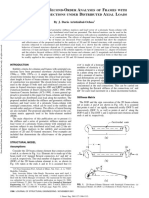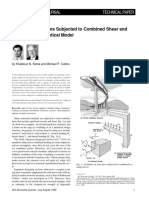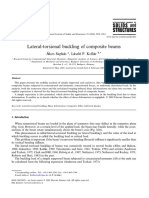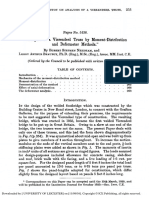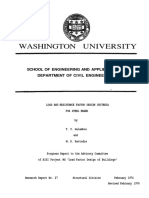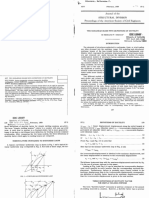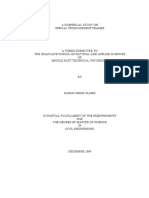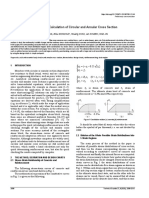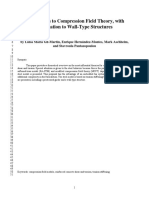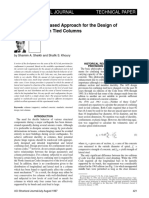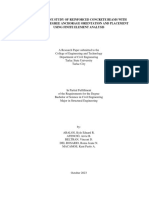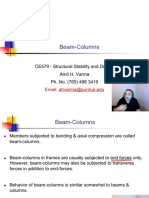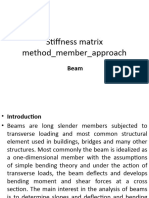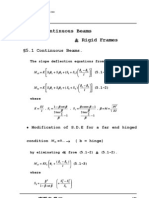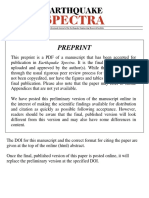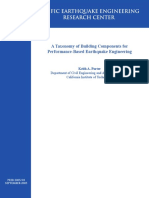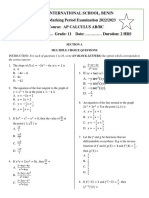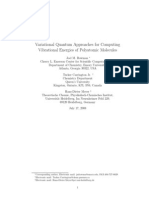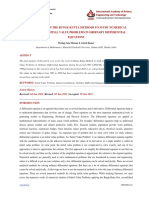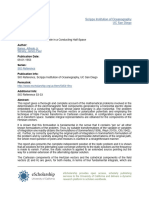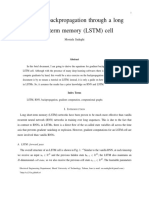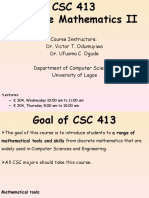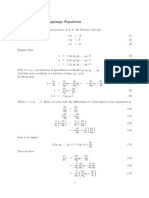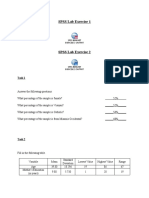0% found this document useful (0 votes)
190 views22 pagesBeam Columns À Frames: CE579 - Structural Stability and Design Amit H. Varma Ph. No. (765) 496 3419
Beam Columns à Frames
The document discusses the buckling behavior of beam columns and frames. It provides the differential equations that govern the buckling behavior of beam columns and frames. It also defines the stability coefficients that relate the moments and rotations of beam columns. Frames are analyzed as an assembly of beam columns connected at their ends. The equations for internal forces and moments in terms of applied loads and displacements are developed for beam columns and frames.
Uploaded by
Qazi Abdul MoeedCopyright
© © All Rights Reserved
We take content rights seriously. If you suspect this is your content, claim it here.
Available Formats
Download as PDF, TXT or read online on Scribd
0% found this document useful (0 votes)
190 views22 pagesBeam Columns À Frames: CE579 - Structural Stability and Design Amit H. Varma Ph. No. (765) 496 3419
Beam Columns à Frames
The document discusses the buckling behavior of beam columns and frames. It provides the differential equations that govern the buckling behavior of beam columns and frames. It also defines the stability coefficients that relate the moments and rotations of beam columns. Frames are analyzed as an assembly of beam columns connected at their ends. The equations for internal forces and moments in terms of applied loads and displacements are developed for beam columns and frames.
Uploaded by
Qazi Abdul MoeedCopyright
© © All Rights Reserved
We take content rights seriously. If you suspect this is your content, claim it here.
Available Formats
Download as PDF, TXT or read online on Scribd
/ 22







